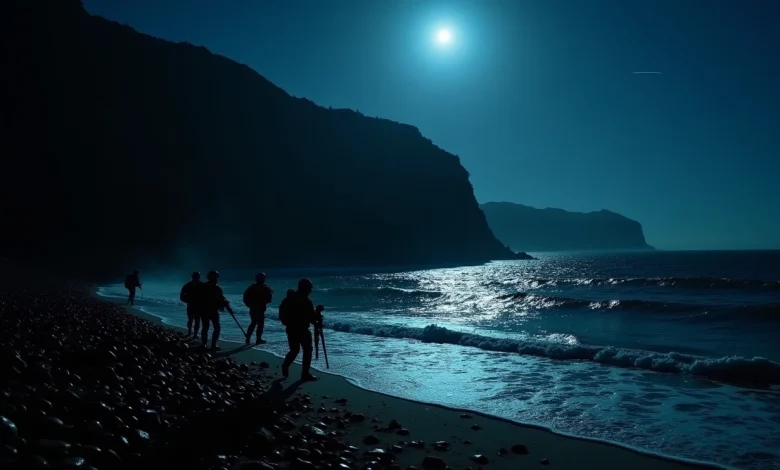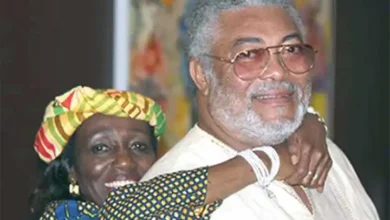
Navy SEAL Mission Gone Wrong Kills Unarmed North Koreans
A secret Navy SEAL operation in 2019 turned tragic as elite U.S. commandos killed several unarmed North Korean civilians in a failed covert mission. President Donald Trump gave his personal approval for the operation at the time of his first term. The team wanted to install an electronic listening device to monitor North Korean leader Kim Jong-un’s communications.
SEAL Team Six members approached North Korean shores under cover of darkness. This was the same unit that killed Osama bin Laden in 2011. The mission took a devastating turn as the team came across civilians who seemed to be diving for shellfish. A classified Pentagon review later determined that the killings aligned with engagement rules. The SEALs ended up withdrawing without installing the listening device. The Trump administration’s decision to carry out this operation raised concerns since they didn’t inform Congress’s core team members.
Trump Approves Covert Navy SEAL Mission in North Korea
Image Source: Grunge
President Donald Trump faced a pivotal moment in 2018 when U.S. intelligence agencies came to him with a bold plan. They wanted his approval to conduct electronic surveillance operations on North Korean soil. The mission was clear but incredibly dangerous – they needed to install a device that could intercept Kim Jong-un’s communications during nuclear talks.
American officials had struggled for years with North Korea’s secretive nature. Former Director of National Intelligence Dan Coats called North Korea “one of the hardest, if not the hardest” intelligence targets. The diplomatic landscape showed promise in 2018 with suspended nuclear tests and open negotiations. Yet U.S. officials couldn’t shake their doubts about Kim’s real intentions.
Intelligence experts proposed a breakthrough solution with a cutting-edge electronic device that would give them unprecedented access to Kim’s private communications. In spite of that, this plan meant American operatives had to step onto North Korean soil, which could spark both diplomatic crises and military confrontations.
Military leadership picked SEAL Team 6’s Red Squadron to handle this high-stakes mission. This elite unit’s reputation preceded them – they were the same team that carried out the bin Laden raid. The dangers loomed large. Any detection could destroy ongoing negotiations or put operatives at risk of becoming hostages. The mission’s gravity demanded Trump’s direct authorization.
Trump weighed the risks and gave his approval, launching what became one of his administration’s most daring covert operations.
SEAL Team 6 Executes High-Risk Infiltration via Mini-Subs
SEAL Team 6 launched their stealthy approach toward North Korean shores from a submerged Los Angeles class attack submarine. The elite operators employed Mark 8 Mod 1 SEAL Delivery Vehicles (SDVs) – specialized mini-submarines built for covert maritime operations. SEALs often describe these flooded submersibles as being “locked in a little black coffin deep under the water”.
The SDVs moved quietly through the frigid waters at 4 knots from their position ten miles offshore. Their silver-zinc battery power systems made sonar detection very difficult. This stealth capability became crucial to the mission’s success because detection would lead to devastating results.
The team’s plan called for positioning their miniature submarine on the sandy bottom during optimal tide. They would then switch from internal SCUBA rigs to tactical Draeger rebreathers. The operators would exit the vehicle and swim toward shore, measuring distance by counting fin kicks.
The team needed precise underwater navigation techniques. Electronic systems proved unreliable due to the region’s GPS jamming capabilities. Strict communications blackout protocols protected their operational security.
The SEALs faced their biggest challenges inside the SDVs. The cramped, freezing conditions threatened to weaken their combat readiness upon arrival. The sea conditions and water temperature created a big deal as it meant that their operational range would be limited.
SEALs Kill Unarmed Civilians and Abort Mission
A meticulously planned Navy SEAL mission fell apart near North Korean shores. The SEALs moved onto what seemed like an empty rocky coastline in early 2019. A North Korean boat suddenly emerged from the darkness. Its bow lights swept across the water, creating tense moments for the operatives.
The senior enlisted SEAL silently aimed his rifle and fired to avoid detection. His team members followed his lead and killed everyone on the boat. The shore team checked the vessel for casualties and found no weapons or uniforms. They only found evidence that the victims were civilians diving for shellfish.
The SEALs tried to hide the whole ordeal by dragging bodies into the water. They stabbed the victims’ lungs with knives to make them sink. This deadly mission turned into an emergency extraction as the team signaled for help.
Their submarine had to move dangerously close to shore for pickup before racing toward open water. US spy satellites later detected increased North Korean military presence in the area. No public statements about the incident ever came to light.
This failed US Navy SEAL mission shows the dangers of covert operations. The team’s careful planning could not prevent civilian casualties. These unexpected encounters forced them to abort without completing their surveillance goals.
The classified operation explains the most important risks of covert military actions in foreign territories. America’s most elite fighting unit planned and executed the mission meticulously. However, unexpected encounters with civilians changed the mission’s outcome dramatically. The deaths of unarmed North Korean shellfish divers showed how quickly high-stakes operations can go out of control, even with highly trained special forces.
The Pentagon ended up declaring the killings justified under existing rules of engagement. The failed operation raised serious questions about the president’s authorization of covert missions. On top of that, it revealed potential oversight gaps in the military chain of command because key congressional leaders weren’t notified. The team’s attempt to hide evidence made the operation’s ethical aspects even more complicated.
The intelligence community definitely faced real challenges to learn about North Korea’s intentions during nuclear negotiations. This mission showed the huge diplomatic risks America took while participating in delicate talks with Kim Jong-un’s regime. All diplomatic progress could have vanished if North Korea had publicly revealed the whole ordeal.
This mission became part of classified operations that weigh national security interests against international law. SEAL Team 6’s extraordinary capabilities weren’t enough – they had to retreat without achieving their main goal. The operation serves as a stark reminder that even elite military units have limits when they face warfare’s unpredictable human elements.





